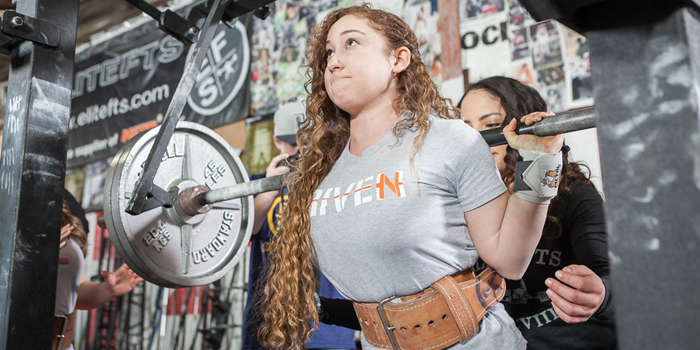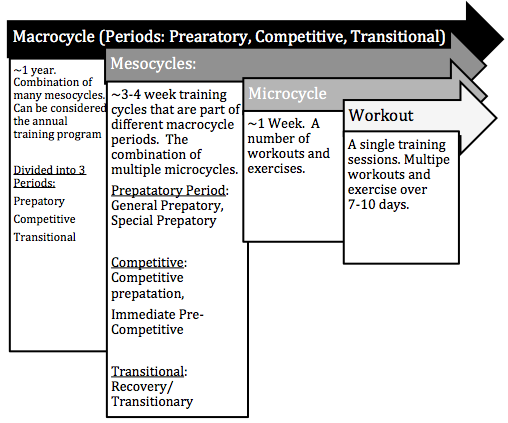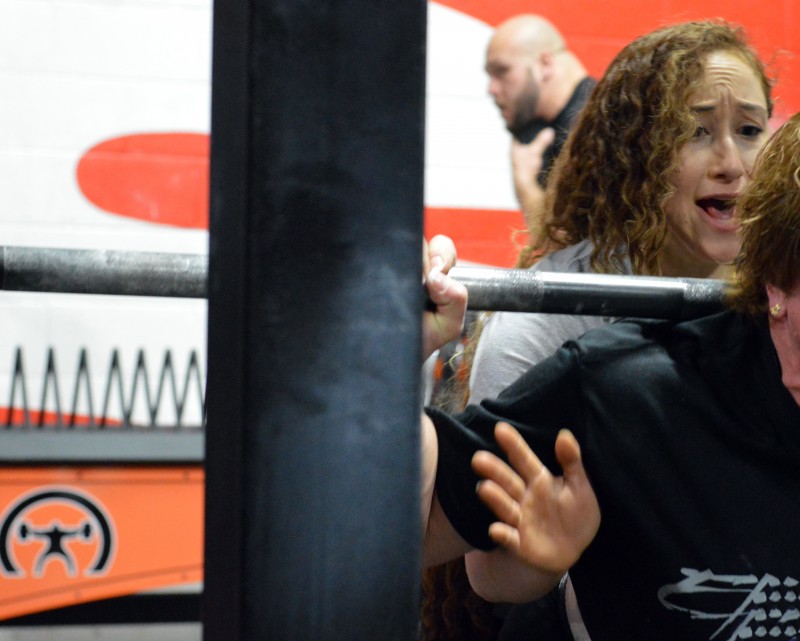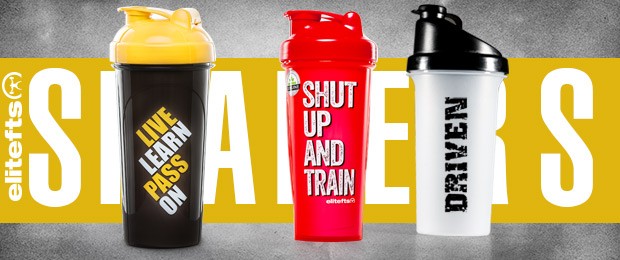
When you first start lifting, you probably could have done just about anything that involved moving loads to get stronger. But what happens when you come to the dreaded plateau? THE PLATEAU is that first day when your hard work in gym stops raining improvements. In fact, it is actually the day that your hard work starts raining frustrations. And, for those of you who want to keep getting stronger, it is the day that forces you to search for ways to go about your training. For some, it’s even the day that you type the words “strength training periodization” into your Google search engine.
Periodization
A planned method of structured training, intended to bring about improved performance, through the use specific, intense, and organized exercises, training sessions, and training cycles.
Before there were a bunch of fancy training programs (like there are today), and after Milo carried the growing cow a bit further each day (the old tale of progressive overload), there was traditional periodization. Traditional periodization is what most people are first exposed to when they start resistance training. During the 1950-1960’s, a Russian Professor named Dr. Lev Matveyev developed this method as an organized way to training athletes1. So, with all the cool programs out there now, I figured it was worth it to go back and get a refresher on the original: Traditional Periodization.
Traditional Periodization
Volume (sets x reps x weight lifted) decreases and intensity (%1RM) increases over the course of a training year (macrocycle). Classically, macrocycles are broken down into the following periods: preparatory, competition, and recovery.
Traditional periodization includes a macrocycle (about a years worth of training) that progresses from high volume and low-intensity training to low volume and high-intensity training. The macrocycle is broken up into three periods: preparatory, competitive, and transitional. Within each of these periods are mesocycles, or smaller training cycles within the period. In the preparatory period there are two mesocycles (general preparation and special preparation) and in the competitive period there are two mesocycles (competitive preparation and immediate pre-competitive training).
The teeter-totter between volume and intensity also exists within these mesocycles that make up the macrocycle. Thus, as volume decreases over the mesocycle, intensity increases. Of note, the transitional period only has one mesocycle, which is focused on recovery. Below is a visual picture which sums up all those words above.
Overview of Traditional Periodization — Inspired by 1,2
Example Mesocycle Sequencing in the Macrocycle:
- General Preparatory
- Special Preparatory
- Competitive Preparation
- Immediate Pre-Competitive Training
- Transitory
Normally, mesocycles last for 3-4 weeks and are based on organizing training to achieve certain aims. For example, in the general preparation mesocycle one might aim to increase their motor skills and general abilities; whereas, in the special preparatory mesocycle, one might aim to develop more specialized motor and technical abilities and skills2. In these mesocycles, the overall volume is much higher than it is in the later mesocycles that make up the competitive period; however, the intensity is much lower. Within the competitive period, the competitive preparation mesocycle is aimed at increasing sport/event specific motor abilities, skills, and strengths; while, the pre-competitive training mesocycle is aimed at achieving sport/event level strength, fitness, and competitive readiness2. Thus, the macrocycle progresses so that volume can be low, and intensity can be high, when competition time comes.
For the strength athlete, those mesocycles can be organized to look something like this: strength endurance, hypertrophy, maximum strength, power. However, this differs very little from what is classically thought of as “mesocycles of traditional periodization. For example, building strength endurance is part of the general physical preparation of a competition that includes maximal strength attempts. Also, the hypertrophy phase, like a special preparatory phase, is aimed at helping strength athletes (like a powerlifter) work on technical abilities (many reps= technical practice), motor abilities, and muscle/tendon development.
RELATED: Effective or Ineffective: When To Keep or Drop Your Training Program
In traditional periodization, once the macrocycle is complete, you start back at the first mesocycle, but adjust your intensities so they are based off of your new 1RM. This new 1RM should come from the fact that you have been concurrently applying training stimuli that affects specific targeted abilities that contribute to your ability to move more weight. Or, in lay terms, you got stronger because you planned and organized your training to do so. So, for those of you who just want some basic, traditional programming, here’s a blueprint to using traditional periodization for powerlifting programming.
EXAMPLE: Setup For Powerlifting
Annual Plan-Macrocycle
Period 1 — Preparation: Volume should start at 40 and increase to 100 percent of maximum over the period and intensity should start at ~40 and increase to 70% of 1RM. Preparation is made up of two mesocycles: general preparation and a special preparation.
Mesocycle 1: General Preparation
- Goal: to build strength endurance and various motor abilities.
- High Volume, Low Intensity.
- Parameters: 8-20 reps/set, 3-5 sets, 1-3 sessions a day, 3-4 sessions a week.
Mesocycle 2: Special Preparation
- Goal: Improve basic strength and more specialized motor/technical skills and abilities.
- High Intensity and moderate to high volume.
- Parameters: 4-6 reps/set; 3-5 sets, 1-3 sessions/day, 3-5 days/week
Period 2 — Competitive: Volume should start at 100 and decrease to ~60 percent of maximum over the period and intensity should start between 60-70%, peak near the end at 100%, with the aim of peaking at the target competition. It is made up two mesocycles: competitive preparation and immediate pre-competitive training
Mesocycle 1: Competitive Preparation
- Goal: Increase sport/event specific abilities and skills related to competitive performance.
- Volume starts to be reduced/is low and intensity on sport-specific exercises is increased/is high.
- Parameters: 2-3 reps/set, 3-5 sets, 1-2 sessions/day, 3-6 days/week.
Mesocycle 2: Immediate Pre-Competitive Training
- Goal: Sport/event specific readiness.
- Lowest volume, highest intensity (i.e. mock meets, taking openers, etc).
- Parameters: 1-3 reps/set, 1-3 sets, 1 session/day, 1-5days/week.
Period 3 — Transitional
- Goal: Recovery
- Parameters: Normally 1 mesocycle that makes up this period using active rest and “fun” activities.
References
- Matveyev, L.P. (1964). Problem of periodization in sports training. Moscow: Fitzkultura I Sport.
- Issurin, V. (2008). Block Periodization: Breakthrough in sports training. Michigan: Ultimate Athlete Concepts.













1 Comment